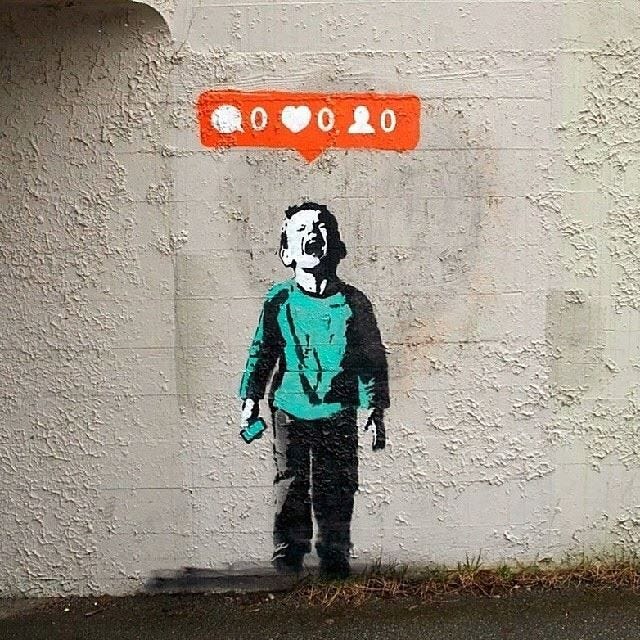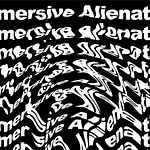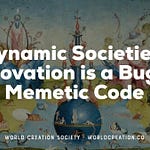Charisma has an aura of the magical, divine, and supernatural; its effectiveness lies in its power over individuals, who endow it with authority. In the eyes of the perceiver, it creates a form of other-worldliness and a magical effect—evoking an aesthetic quality of the sublime—culminating in a feeling of awe, transcendence, and connection to a higher purpose.
It’s a quality often attributed to almighty Gods and leaders. Even more interestingly, one can list many mythologies in human history, religion, and science fiction of tools, weapons, or technologies possessing such divine qualities. In the past decades, we’ve also witnessed the extension of charisma to nations, brands, organizations, and products.
As technology becomes more humanized (e.g., advances in machine learning, voice and face recognition, and natural language processing, to name a few), its backend becomes less understood by the standard user and creates an aura of charisma—a power that goes beyond mere form or function to stimulate devotion, yearning, and even fanaticism.
Technologies can have several functions, as media, tools, and social actors. They can manufacture charismatic properties by: 1) hijacking humans' evolutionary signalling mechanisms; 2) creating a compelling narrative that gives meaning to its users and controls the output of unprecedented cultural capital; 3) forming hyperrealities that embody the collective consciousness and lead to a society and economy of spectacle.
Defining Charisma: its Origins & Evolution
For our purposes, charisma is defined as values-based, symbolic, and emotion-laden signalling. The charismatic object or person is experienced by observers as possessed by and transmitting an uncanny and compelling force.
Let’s deconstruct the origin and evolution of charisma in human history.
Evolutionary Signalling Mechanism
Charisma stems from our evolutionary past. It was a form of survival strategy in which charismatic leaders signalled to others their ability to acquire human and material resources for survival and to fend off predators.
Charisma is an extension of human singing and coordinated dancing, which served as aposematic antipredator strategies in our ancestral past.
It’s an audio-visual intimidation display, serving as a counter-signalling adaptation to prevent attacks from predators or rivaling tribes by recognizing the charismatic individual or group as unprofitable prey or target.
The haka, for example, is a traditional ancestral war cry from the Māori people of New Zealand. It is a synchronized posture dance performed by a group, with vigorous movements and stamping of the feet accompanied by rhythmically shouted cacophony. The result sends a strong message to predators about the unity and determination of the group as a single large intimidating organism. In modern times, we see similar displays in military demonstrations and sports.
19th-century illustration of a haka.
Even more fascinating is the battle trance that humans feel as they perform this display, and the battle trance is central to how humans developed a group identity. It creates analgesia and aphobia, short-circuiting an individual’s survival instincts and creating a collective identity, consequently dissimulating individual identity.
As Aldous Huxley humorously puts it in The Devils of Loudun (1952): “No man however civilized can listen very long to African drumming, or Indian chanting, or Welsh hymn singing, and retain intact his critical and self-conscious personality. If exposed long enough to the tom toms and the singing, every one of our philosophers would end by capering and howling.”
Rhetorical Performance & the Rise of Entrepreneurial Propagandists
As humans evolved, we adopted complex rhetorical communication strategies that signaled charismatic qualities to observers. Charismatic leaders effectively utilize oratory skills, resorting to ethos (appeal to ethic), logos (appeal to logic), and pathos (appeal to emotion), but most importantly, to kairos (the opportune moment).
In this context, for a charismatic effect to take place and for followers to willingly succumb, there is usually: 1) a justification of a mission and purpose by appealing to values that distinguish right from wrong; 2) communication in symbolic ways to make the message clear and vivid, as well as symbolizing and embodying the moral unity of the collective; and 3) signalling conviction and passion for the mission through emotional displays. By applying these three components, one can be successful in leading nations, organizations, teams, and users.
A successfully charismatic speech has extreme trance-like power over an audience that creates an emotional rollercoaster of collective hallucination.
There are ample examples of charismatic politicians, activists, and dictators, whether it’s Martin Luther King Jr.’s “I Have a Dream” speech in 1963 or Adolf Hitler’s numerous oratory performances. Interestingly, Hitler borrowed from elements of spectacle in the circus and grand opera and cleverly combined them with the edifying ceremonies reminiscent of church rituals.
In modern times, we have begun to see technology used to amplify charisma across a large population, such as the use of the Volksempfänger radio in Germany to spread Nazi propaganda, led by Minister Joseph Goebbels in 1936. The Volksempfänger radio was manufactured strategically cheap enough for the everyday worker to own and had the attributes of innovation, centralization, and simultaneity that reached the entirety of the nation.
“All of Germany hears the Führer with the People's Receiver.” – 1936 Nazi propaganda poster, promoting the use of the Volksempfänger.
Technological Charisma: The New Order
We’ve seen technology used as an amplification mechanism by individuals, political groups, and agents, but as it becomes more effectively designed to leverage human nature, technology itself creates an aura of charisma. If the signalling of a technological device or program is successful, it will appear prototypical to followers, and the followers will consequently infer certain qualities to it, such as “charisma.”
The form of technology utilized is less important than the imagination it invokes in what it promises to do. If we look at Facebook, it captures people’s imagination with its aspirational promise in connecting the world. In the words of Zuckerberg, creating a community that “stands for giving a person a voice, for promoting understanding and for including everyone in the opportunities of the modern world.” The other side of the coin is that should you choose not to conform, you risk perishing into the abyss as your online identity is your identity, commoditized as a curated personal brand.
While promising that these technologies highlight people’s uniqueness, they create a herd network of behaviourally reinforced conformity, while simultaneously radicalizing users through algorithmic curation and obedience.
Imagine the power of data-driven targeted personalization on a mass scale and over time. Similar to gene sequencing, we would eventually have behavioural sequencing of users based on their activity. We’ve already seen the beginnings of this on social media platforms, such as Facebook, which experiment in influencing a user’s feelings by selectively showing certain content on their newsfeed.
Borrowing from B.J. Fogg’s functional triad model, persuasive technologies function as tools, media, and social actors. These technologies function as tools in their ability to reinforce or restructure a targeted behavior, as media in creating experiences through interactivity and narrative, and as social actors in applying social influence strategies.
One can imagine the power of effectively engineering and leveraging technological charisma to influence users and, ultimately, society.
We see hints of this phenomenon in social media, as people’s livelihood and social interactions are mediated and dependent upon social media and content platforms, it facilitates tremendous leverage and control over them as their activities and social lives are dictated by these technologies.
The Properties of Technological Charisma
Now that we’ve established a preliminary, albeit simplistic definition and historical account of charisma, let’s explore the properties of technological charisma.
Hijacking Evolutionary Fitness Signalling
Technological charisma signals favourable qualities to receivers (i.e., users) that propel them to associate with the technology to increase their evolutionary fitness.
As mentioned earlier, charisma signals to others the ability to acquire resources for survival as well as fend off predators. In evolutionary signalling theory, signals are given in contexts such as mate selection, and evolve because they modify the behaviour of the receiver to benefit the signaller. Signals convey unobservable information to the receiver. For signals to be useful, they need to be correct enough to elicit certain behavioural responses in the receiver.
Over time, an evolutionary arms race occurs, with signallers evolving to better manipulate receivers and receivers evolving to become better at resisting manipulation. Similar to how evolutionary generative adversarial networks function, this evolutionary arms race can be applied to technological charisma whereby, acting as the signaller, it develops more effective means of signal hijacking to the human receivers to solicit behavioural responses. However, mate signalling leads to an evolutionary stable strategy. It’s a Nash equilibrium that once established in a population, natural selection alone is enough to prevent alternative strategies from invading successfully.
When you apply these dynamics to humans and technology, technology will prevail over time by adopting dark triad strategies, for example, as well as more complex strategies that can be incomprehensible to humans. We see examples of this in chess and in competitive gaming, where an AI is capable of making moves that seem alien and remarkable to the human observer.
Technological charisma has both aspirational traits of virtue and a ‘shadow’ with dark triad traits, which reflects humans’ cognitively dissonant perceptions of themselves.
Depending on the technology’s design and programming, it can have a more dominant virtuous side or shadow side, with the more dominant side being rewarded in its users. Should it have a shadow-dominant design and programming, it behaviourally reinforces the seven deadly sins of pride, sloth, gluttony, anger, envy, lust, and greed.
Activating God-Mode: Narrative & Cultural Capital Control Disrupting Religion, State, and Institutions
Technological charisma creates a compelling narrative that gives meaning to its users and accumulates unprecedented cultural capital.
Disputa by Italian Renaissance artist Raphael Sanzio da Urbino. The Medici family played an important role in patronage to manufacture Renaissance culture.
Humans have developed an impressive capacity to organize and communicate experience in a narrative form. Stories can be considered cultural currency which serves to influence interpretations of reality on a collective level—a sort of software of the mind.
Technology can control and propagate culture, whereby culture is a bundle of behaviours, thoughts, and actions which allow us to collaborate and interact with each other. Consequently, the unconscious habits of users are determined by technology, which limits and directs the choices they choose in order to act.
Technological charisma disrupts the cultural control of religion, state, and institutions, similar to how blockchain currencies attempt to disrupt national state-enforced currencies. People share a collective fiction of the inherent value of paper money, and that fiction allows people to trade paper for resources.
Technology selectively frames cultural production and its propagation, similar to how gifted politicians assess the reactions of their audiences to rally them in their ascent and reinforcement of power. Algorithms optimize for engagement and favor certain types of content over others, gradually conditioning both content producers and their audiences.
The link between technological charisma and religious experience is especially strong, as a system built on faith that is maintained and strengthened outside of the auspices of evidence.
Capturing the user’s belief in the value of the technology, combined with widespread adoption, one feels compelled to participate or risk perishing into the existential abyss.
Behind the magical black box of technology, charisma is consciously engineered while appearing to be “organic” and bottom-up—creating a form of soft power that engages and co-opts (rather than coerces) through appeal and attraction.
Technological charisma makes computational memetic programming possible. We can program “code" with charismatic technology serving as the medium, to transmit memes to achieve a given desired outcome through cultural information transfer—amplifying the ability to create products, phrases, and ideas that disseminate within human networks.
Manufactured Hypperrealities & the Society of Spectacle
Technological charisma successfully engineered creates a form of hyperreality that embodies the collective consciousness and leads to a society and economy of spectacle.
“Nobody likes me”, by Vancouver street artist ihatestencils.
Hyperrealities create a spatiality with no clear distinction between what is real and what is fiction, as they are seamlessly blended together, leading to a form of indefinite examination and surveillance that mediates an individual’s thoughts and behaviours.
Individuals within this hyperreality become a collection of data points, which allows for more efficient creation and classification of individuals against norms and value attribution. It seamlessly regulates, controls, and permeates the daily lives of the users by forcing them to experience changes in their material environment.
Hyperrealities leverage human nature by creating a system of control and power to create stratified social systems of hierarchy and domination that endure and reproduce without powerful resistance and without the conscious recognition of users.
Through charismatic technology, humans live within a world of representation, with social relations being mediated by digital images and space. Appearance becomes a fetishized commodity that occupies social life, manifesting into a form of spectacle. As Debord puts it, this world of representation transforms being into having, and having into appearing as a result of the economy invades the very fabric of our social lives.
Spectacles were always present in human societies, but the digitization of spectacles makes it easier to metricize and attribute an economic value to them. The result? We can fall prey to busying ourselves with mindless chores and playing silly games to win stupid prizes as a form of virtue signalling. Quantification and gamification in all parts of life become an end in themselves. When man becomes a machine, we end up in a state of constant marginal optimization for efficiency—the modern extension of the Protestant work ethic—but we don’t bother to ask whether the end itself is worth optimizing for. It creates a form of alienation and loneliness within a crowd.
With people trying to understand themselves through digital representation, they end up in a state of nihilistic domesticated coziness as both the consumers and producers of spectacles.
Humans are mimetic in nature, so it is inevitable that we would fall into the trap of the ideology of competition for marginal optimization as a means of social demarcation. The more we compete, the less we gain. We end up slavishly playing games in old crystallized dominance hierarchies, becoming mere replicas of past path dependencies, internalizing our self-worth based on our performance within a system where obedience and replication are rewarded.
In the information society, where the development, distribution, usage, integration, and manipulation of information is a significant economic, political, and cultural activity, individuals become digital avatars acting as agents within a digital economy with information circulating as currency. A digital platform starts to serve as a centralized cultural narrative amplification mechanism with gamified incentives, creating hyperrealities that self-regulate our thinking and behaviour.
Do personalized recommendations help us learn about who we are or ultimately shape who we are? Are we succumbing to algorithmic obedience through algorithmic curation? Do we find ourselves in the beginnings of probabilistic determinism where events within given multiverse hyperrealities are bound by causality in such a way that any state an agent can be in is accurately determined by prior behaviour?
Our digital identity defines who we are, what we want, what we think, what we have, and ultimately, who we will be. When we become uniform, calculable, we become legibly predictable.
Exploring Probable, Plausible, and Preferable Futures
I’ve attempted to define technological charisma and to list some of its properties; however, this definition and the properties are far from being robust or exhaustive, as I am still trying to hash out a more refined theory from an antidisciplinary perspective.
My goal is for you to become more cognizant of the frameworks and properties of technological charisma to allow you to better evaluate and deconstruct it—illuminating the magical act behind the veil of the sublime.
I believe advocating for technological charisma “neutrality,” similar to net neutrality, is futile. Moreover, hoping that decentralized technology will solve the issue, while it could help control user privacy and data, will still fall prey to technological charisma, and there will always be groups within networks that are able to sway its direction.
My intent is not to be an alarmist, but to explore uncomfortable ideas and concepts in order to generate discussion and debate. By deconstructing technological charisma and offering alternative narratives, I’m attempting to provide a glimpse into probable, plausible, and preferable futures as a consequence of emerging technologies.
By understanding the hidden impact of its cultural, social, economic, and ethical implications of technological charisma, it helps us define desirable futures and avoid those least desirable. In all cases, we can go on as many technology dopamine diets as we want or decide to go completely “off-grid,” but we have no choice but to get our hands dirty and be involved in the design and use of these emerging technologies.
Thanks for reading, subscribe to World Creation Society to get antidisciplinary insights and reflections on emerging futures at the intersection of technology, society, and culture.
Show your support
Become a paying subscriber or patron.
Get a one-time hypothetical coffee ☕.
Share the newsletter with your network.




















Share this post